Management Strategies for White Mold Control
Diverse measures adopted together must be employed to keep the inoculum level low in infested crops
With a great capacity to adapt to the soybean, corn and cotton production system used in the Cerrado, the complex of caterpillars of the genus spodoptera has recorded outbreaks and changes in its population dynamics over the last few harvests. Favored by successive crops, these pests require broad and careful management by producers.
In the Central-West region, pests present a dynamic with constant changes. Some have recorded outbreaks, requiring attention and control in order to avoid damage to crops. Among these pests with great adaptation to the production system implemented in the Cerrado region, it is possible to mention the complex of caterpillars of the genus spodoptera (Gallo et al, 2002), with growing economic importance in soybean, corn and cotton crops. Some species of this genus are listed as secondary pests, due to sporadic occurrence and previously insignificant damage, but in the current scenario their losses can reach 50% in crop productivity.
The species that stand out for the greatest occurrence and importance of damage to the main crops in the Central-West region are Spodoptera frugiperda (fall armyworm), Spodoptera eridania e cosmioides spodoptera, popularly known as pod caterpillars or black caterpillars. These pests have occurred and caused damage at different stages of crop development. In certain places you can also observe Spodoptera albula, already identified in states such as Goiás and others. Caterpillars of the genus spodoptera They belong to the order Lepidoptera, from the Noctuidae family and have an average cycle of around 30 days, depending on the host. In adult forms, they are nocturnal moths. S. eridania It has a light gray color, measuring around 40mm in wingspan, with greyish front wings with a black dot in the center and a black stripe longitudinal to the body of the pest, and the hind wings are whitish in color. A female can oviposit around 800 eggs, which, laid in masses, are shaped like a flattened sphere, greenish in color and covered by hairs from the moth's body. They are inserted into the lower part of the leaves. The caterpillars, in the first instars, are greenish, with four dark spots on the back. As they develop, they become brown in color, with three yellow longitudinal stripes and begin to attack the dorsal surface of the leaves. In cotton cultivation they can reach six instars, and in soybean cultivation they reach seven instars (Parra et al, 1977). Generally, caterpillars S. eridania They are found in the lowest part of the plants (“lowlands”) and are most active at night. In cotton cultivation, its damage is defoliation, destruction of the limbs, often leaving the upper part intact, causing perforations in the stem, holes and cuts, protecting the main veins (Silvie et al, 2007). The damage caused by this pest is highlighted when the flower buds appear, piercing them. According to Santos et al (2010), in the laboratory, more than 57% of the caterpillars evaluated damaged the reproductive structures of cotton plants, with a proportion of 1,7 floral buds being attacked by 4th instar caterpillars.

Among the species of the genus spodoptera, S. cosmioides it was also found in the region and observed in several states, such as Mato Grosso, Paraná, Goiás, Bahia, Piauí, Maranhão and Rondônia (Tomquelski 2011). Damage from this pest is observed, mainly in soybean crops, causing defoliation, an effect of the “leftover” from applications carried out to control other pests.
S. cosmioides presents the adult, a light gray moth, with mottled spots, longitudinally and bordered by a whitish fringe, measuring around 40mm in wingspan. The forewings are white with a fringe. This pest also has a cycle length of around 30 days, depending on the host. The caterpillars are brown to black in color, with a longitudinal yellow lateral stripe that is interrupted by a dark spot on the thorax (Gallo et al.
The female of this insect can lay more than 500 eggs, which are greenish in color. After hatching, the caterpillars initially feed on the leaf parenchyma until they complete their first ecdysis.
The caterpillars of S. cosmioides present similarities in the color pattern and intraspecific variability, related to S. eridania, making identification confusing. The caterpillars of S. cosmioides Newly hatched birds have a light brown body and a black head, then have a brown to black color, with three orange longitudinal stripes, one dorsal and two lateral, with white dots. Above are black triangles pointing towards the insect's back, which can reach 48mm in length.
A parenthesis must be made in relation to these two species, as differences have been observed in soybean cultivation regarding the susceptibility to control of these two caterpillars. It is worth mentioning that this insect is often noticed in the field when in more advanced stages of development, and inside the plants attacking the pods, which makes it difficult to control.
It is also important to highlight the species Spodoptera frugiperda, also known as military armyworm and corn armyworm, considered by many to be one of the main problems for Brazil. In adulthood, it has a dark brown color on the front wings and grayish-white on the back wings, measuring around 35mm in wingspan. The moths expel from 1.500 eggs to 2.000 eggs on the upper surface of the leaves, they are laid in groups with an average of 100 eggs covered by scales and hairs in overlapping layers (an important difference for the field in terms of S. eridania). In the larval stage, the color varies from dark gray to brown, it has a dorsal stripe with black dots (pinnacles) at the base of the bristles, with four dots being characteristic on the 8th segment, it has a cephalic capsule with the adfrontal suture, not reaching the apex of the head. The newly hatched larva spins a silk thread that is used as a means of dispersal and/or escape from natural enemies. They can measure up to 50mm in length at the end of the phase. At the end of the larval period, the caterpillars penetrate the soil, where they transform into reddish pupae, measuring approximately 15 mm in length (Gallo et al.

This complex is formed by polyphagous caterpillars, which attack a wide range of plants, causing various damages, which can lead to irreparable losses to crops and productivity at high levels. Attacks can occur from the beginning of plant development. After the emergence of the seedling, caterpillars of more advanced instars can cut it close to the ground, similar to the attack of the thread caterpillar, leading to the reduction of the stand, carried out mainly by S. frugiperda. In the corn seedling, the attack on the stalk reaching the growth point causes the symptom known as “dead heart”, similar to the attack caused by the elasm caterpillar. However, these pests are important defoliators, and in their initial instars the caterpillars scrape the leaf blades, then consume the most tender parts, leaving the main veins, leading to a reduction in the photosynthetic rate.

When analyzing the agroecosystem in the Center-West, it is observed that the multiplication of some pests is favored, due to it being a system in which soy is the main crop, established in most areas, and can be rotated with corn or cotton, or even cultivated in successive years. After harvest, in some situations, an off-season crop is established (corn or safrinha sorghum, millet, turnip, brachiaria, sunflower, sunn hemp) or even the soil remains “fallow” covered by a wide variety of weeds. The occurrence of pests due to the use of some cover crops, which are important within the direct planting system, can often serve as food for other pests. In addition to this, favorable climatic conditions (high temperatures in summer and mild winter) make the region ideal for the multiplication of insects.
Some crops also suffer from the migration of pests. After harvesting a certain crop, the insect may attack another crop, and, in this case, cotton areas cultivated close to corn areas show a sharp increase in the population of Spodoptera frugiperda, at the time of corn maturation, verified by several researchers, such as Soares and Vieira (1998); Santos (2007), Tomquelski and Rotundo (2007). The same phenomenon occurs with Spodoptera eridania, infesting cotton crops with the end of the soybean and corn cycle.
In this context, the producer/technician must pay attention to the fact that the crop can serve as a source/supplier for crops that may follow, or even as a drain/receiving and sheltering pests, with consequent losses. Caterpillars of this genus present ideal conditions for their development in the production system adopted in different regions.
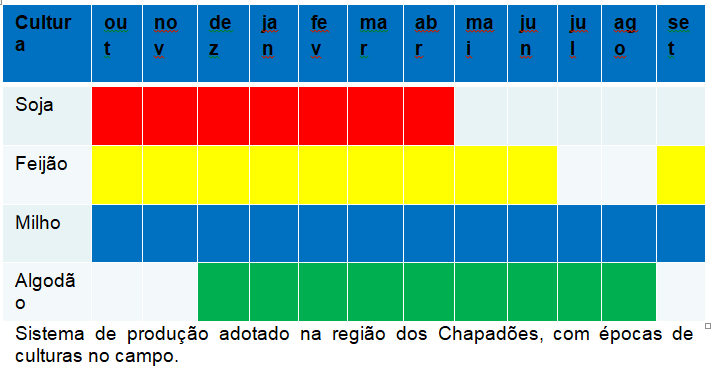
The populations of these pests must be monitored over the years, so that it is possible to monitor changes in the production system. Some traps, such as the light trap, are of great assistance to research, and even for field producers, pheromone traps. In some surveys in the Chapadões region, it has been verified that populations of spodoptera spp. in certain years it decreased, especially in those in which biotechnology entered Bt in corn. However, with the decreasing efficiency of biotechnologies Bt, the numbers of this caterpillar have been increasing. In some studies, observations of this pest show capture of moths in the Chapadões region, in two agricultural harvests.
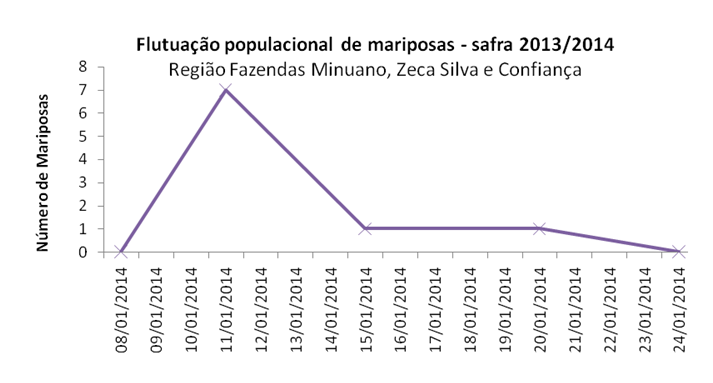

This fact presents a strong correlation with the production system involving crops and cover crops, in which the genus spodoptera tends to inhabit. Many areas in the Cerrado region, due to logistics, time and climate, among other factors, remain fallow. In studies on the correlation between pests and weeds, it was observed that S. frugiperda and S. eridania, in addition to other pests, presented a high frequency of infestation, as demonstrated in a study carried out for two agricultural crops in soybean/bean succession, in the 2011/2012 and 2012/2013 harvests, in which the problem was present in the period prior to soybean sowing.
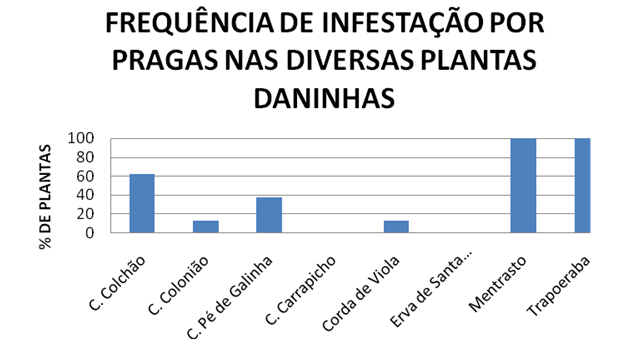
Understanding this insect biology is one of the pillars of Integrated Pest Management (IPM) and, in this way, the producer technician will be able to make better management recommendations for pests.
Monitoring is another pillar of MIP. For caterpillars of this genus, an uneven distribution is observed in crops, points called “islands” with a large quantity of the pest due to this mass posture, being, with the passage of time and the adult population, distributed throughout the area. In spodoptera sp. There is a tendency for caterpillars to move from one plant to another through contact, and when young they are distributed by the wind over short distances. This fact highlights the importance of the quality of the monitoring operation, which requires trained technicians and accuracy. Sampling carried out frequently tends to avoid greater damage from these pests. The beating cloth is a fundamental instrument for good sampling in soybean cultivation, with the amount of sampling varying depending on the size of the plot, operability and, in addition to being representative, for this crop defoliation levels of up to 10% in the reproductive phase tend not to lead to significant losses.
In corn, the observation of scraped plants and the opening of cartridges to quantify and identify the caterpillar stage have led to good results for management, with levels of up to 15% of scraped plants in untreated corn. Bt and 10% in corn Bt, the indices with satisfactory productivity in the work of Fundação Chapadão. In cotton, sampling can also be carried out using a beating cloth, in addition to manual sampling, counting the number of caterpillars throughout the plant, not forgetting the attack on reproductive structures, which must be measured. Results from this crop show that crop defoliation of up to 10% does not generate significant losses, but an important point is the quantification of reproductive structures, in which a control index of 5% must be adopted.
Another point to analyze currently lies in the monitoring implemented before sowing, observing the cover crop. In some situations there are areas with high infestations of spodoptera.
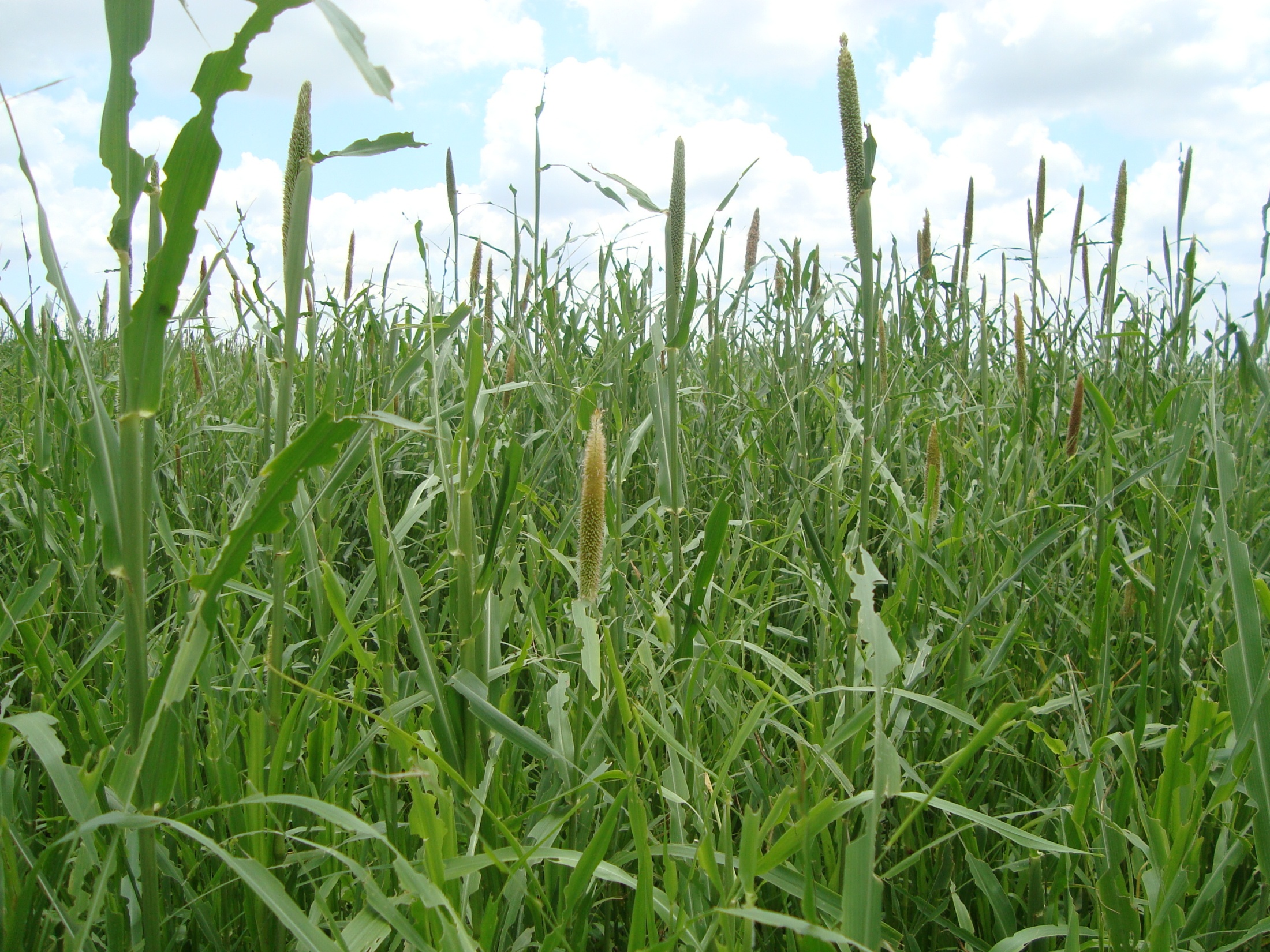
Situations of this order lead the technical producer to devise strategies for managing these pests. One of the alternatives is to remove the pest's food, drying out the area in advance, causing the mortality of part of the population, and/or even part of the population pupating in the soil. But many times the producer needs to sow quickly, with periods of an average of three days of drying and sowing (this is the case in the Chapadões region), making it necessary to control this population in order to avoid a pest attack in the initial phase of the crop. Despite the choice of plants Bt with resistance to several Lepidoptera, this technology affects newborn caterpillars (1st and 2nd instars), not controlling them in advanced stages. Data from more than 30 experiments carried out in the Chapadões region showed that managing these pests during desiccation leads to more than a 50% chance of the producer producing an extra bag of soybeans per hectare, by avoiding damage to the initial phase of the crop. crop, damage due to reduced stand or even early defoliation that can compromise plant development.
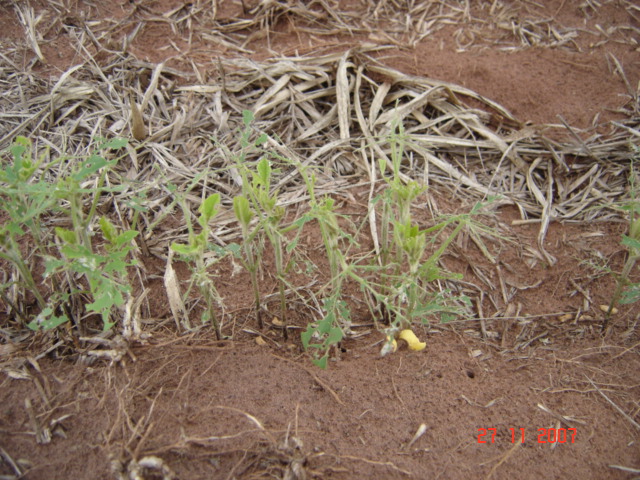
Despite new tools such as soybean biotechnology, with the advent of soybean cultivars Bt with the Cry1Ac event, it is observed that spodoptera It is still an uncontrolled pest. In some crops, such as corn and cotton, several technologies are available. However, some already show some “wear and tear” over the years, due to various factors. In this sense, the lack of correct use of refuge, biotechnology as the only control tactic, the non-expression of high doses to heterozygous individuals, the intensive cultivation system, the non-observance of “windows” for the discontinuity of use of biotechnology, alternative refuges, tigueras, among other issues. Add to this tactics that could have been adopted, favoring greater longevity in the first events Bt.
Analyzing the production system currently among the most widely used management alternatives are insecticides and the use of plants Bt. These strategies present several interesting points to the producer, given their practicality and relatively satisfactory cost in some cases. However, factors previously mentioned such as the species' characteristic of polyphagy, with food all year round, combined with the high reproductive potential, with a high number of descendants, the high dispersal capacity with adults reaching great distances, the climatic conditions favorable to the pest and unfavorable to natural enemies and the high selection pressure exerted by the use of the same technologies, increase the genus spodoptera one of the biggest risks of resistance.
Em S. frugiperda It is known that some insecticide molecules have already presented the problem of resistance, requiring changes in the way they are used, and even the disuse of a given molecule for a certain period of time. This pest is the target of study by a committee formed by several institutions, Irac-BR, whose mission is to maintain all chemical groups of insecticides and acaricides and genetically modified plants as viable alternatives for managing insects and mites through programs partnership with Producers and Education, Research and Extension Institutions, to manage these control tactics in a sustainable way (website www.irac-br.org.br).
Another analysis that cannot be forgotten lies in the fact that several technologies Bt have the same site of action. Analyzing what is available on the market, it is interesting for producers to look for pyramid events, which could guarantee greater efficiency in controlling this pest. It is worth noting that most of the features it already has a protein with reduced efficiency, which in a way will mean that only one protein is working, and there may again be a problem of resistance, but not to one but to two.

the complex spodoptera requires the producer to be attentive to the correct use of the refuge, in order to maintain the effectiveness of the technology. Field observations show that in crops in the Chapadões region, the first control failures have been observed, or even higher percentages of plants attacked with S. frugiperda. Some suggestions on how to arrange technology in the area are shown in Figure 1. Pay attention to the aspect of pest migration at a distance of a maximum of 800m from one area to another. Some adaptations, such as the use in seeders with one or two rows of crops, are being studied. More information can be found on the website www.planterefugio.com.br. The percentages of 10% for corn, 20% cotton and 20% soybeans are still being validated by research, if these percentages are able to promote the number of susceptible individuals needed in the environment, in addition to other tactics within the IPM that can be implemented in these areas . But it is known that the possibility of higher rates is interesting for management.
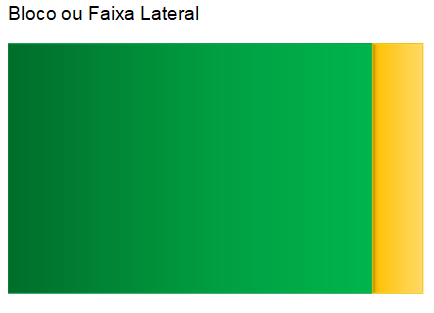
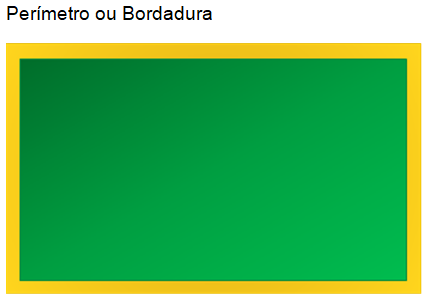
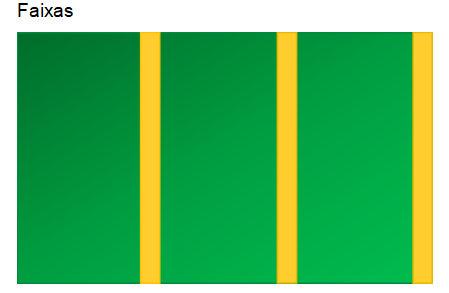
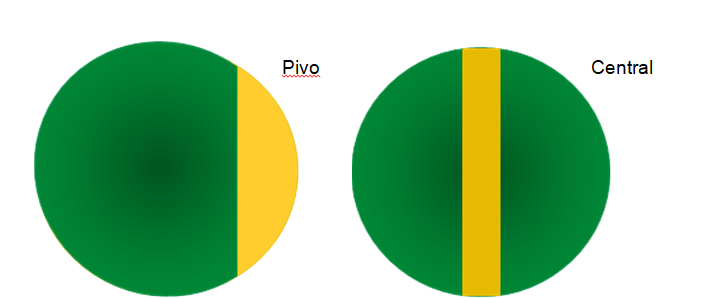

chemical control
Chemical control is of great importance in this scenario, since together with other technologies it can complement IPM. However, if not managed, it may not generate results. Therefore, the modes of action must be analyzed mainly by region. The experience with Spodoptera frugiperda showed, with the action of the Brazilian Insecticide Resistance Action Committee (Irac-BR), that this pest presents differential susceptibility to certain regions, mainly depending on the intensity of corn cultivation in the regions, in addition to hosts, climate, etc.
It is also worth highlighting that the action of various insecticides is very dependent on different conditions, where the popular wisdom that there is no bad product but only a poorly positioned one is valid. These defensives must often be applied in strategies for rotating modes of action. Some chemical groups such as spinosyns, Ca channel inhibitors, diazines, pyrazole, biologicals, and new groups are necessary within management.
In seed treatment, it is essential, in addition to promoting the control of these pests, to maintain the longevity of technologies Bt. This strategy, within the MIP, presents several benefits in addition to having ecological selectivity. By controlling the beginning of infestations (the first population that arrives in certain periods), it tends to be more successful for other practices adopted.
Unfavorable climatic conditions must also be taken into account, provoking more than one intervention in order to reduce the pest infestation. In work carried out by Fundação Chapadão, it was observed that in the initial, end of the day and night periods, the control of Spodoptera frugiperda tends to be superior.

The rotation of action modes tends to avoid unpleasant surprises with the problem of S. frugiperda. Work monitoring the efficiency of insecticides in corn shows that with the increased use of a certain chemical group, efficiency tends to decrease and lead to variations in the results of producers' applications (Tomquelski and Martins 2007) and (Tomquelski and Rotundo 2015) . With the “new” occurrences of S. eridania e S. cosmioides it was observed that insecticides for these species present different behavior to S. frugiperda, with now higher efficiencies. However, close attention must be paid to the timing and application technology used to ensure successful management. In crops such as soybeans and cotton, depending on the stage and size of the plant, they can be hidden, making control difficult.
There is still biological control which, for species such as S. frugiperda, records great success in crops such as corn (Cruz et al 1999) (Valicente and Tuelher 2010), and can be implemented in MIP in a production system.
It can be seen from the above that there is still a long way to go before total population dominance of the genus spodoptera. But it is important to win each battle, without ending the war.
Germison Tomquelski, Chapadão Foundation; Sherithon Martins de Paula, UFMS/Fundação Chapadão; Janaina Oliveira Borgelt, UFMS/Chapadão Foundation
Article published in issue 194 of Cultivar Grandes Culturas.

Receive the latest agriculture news by email